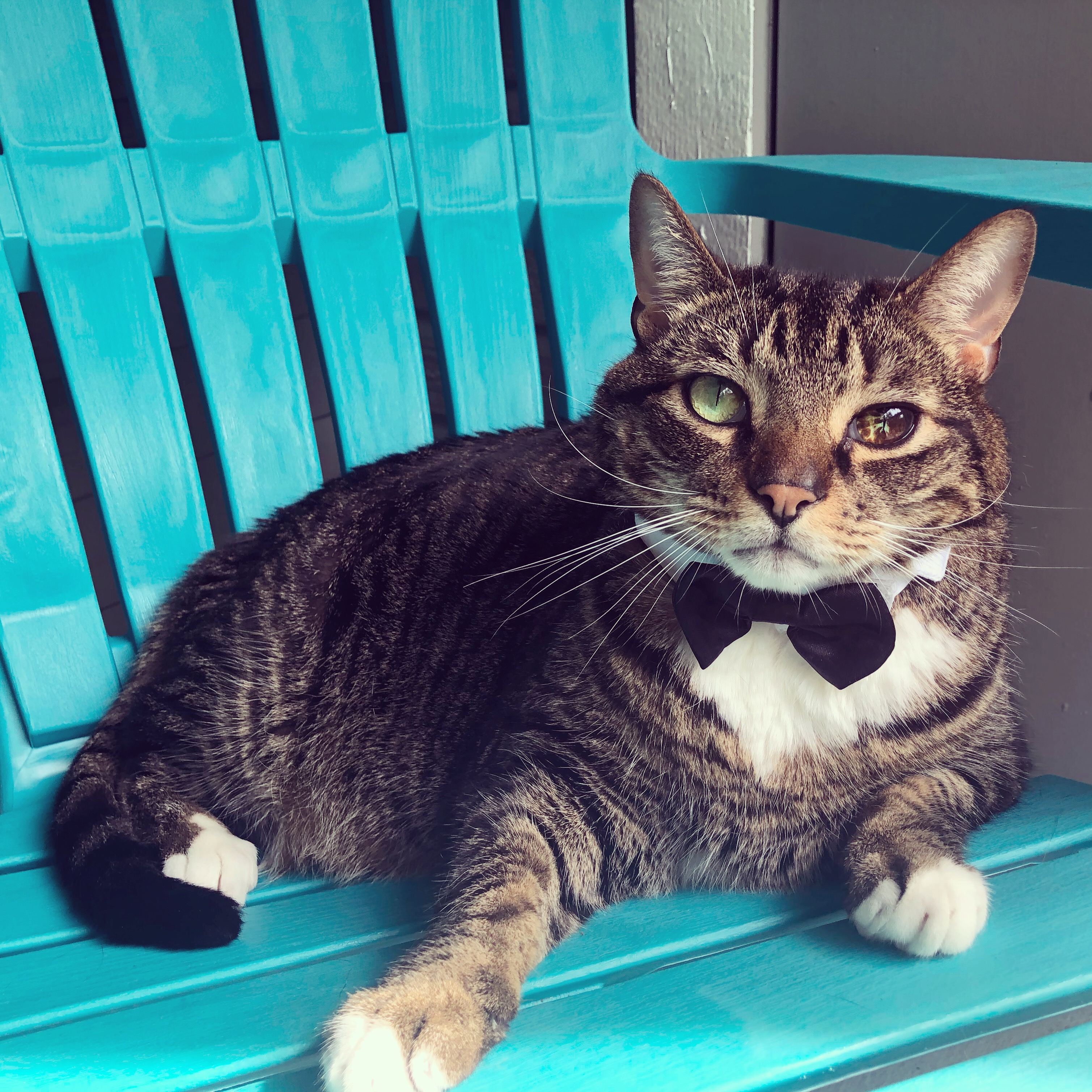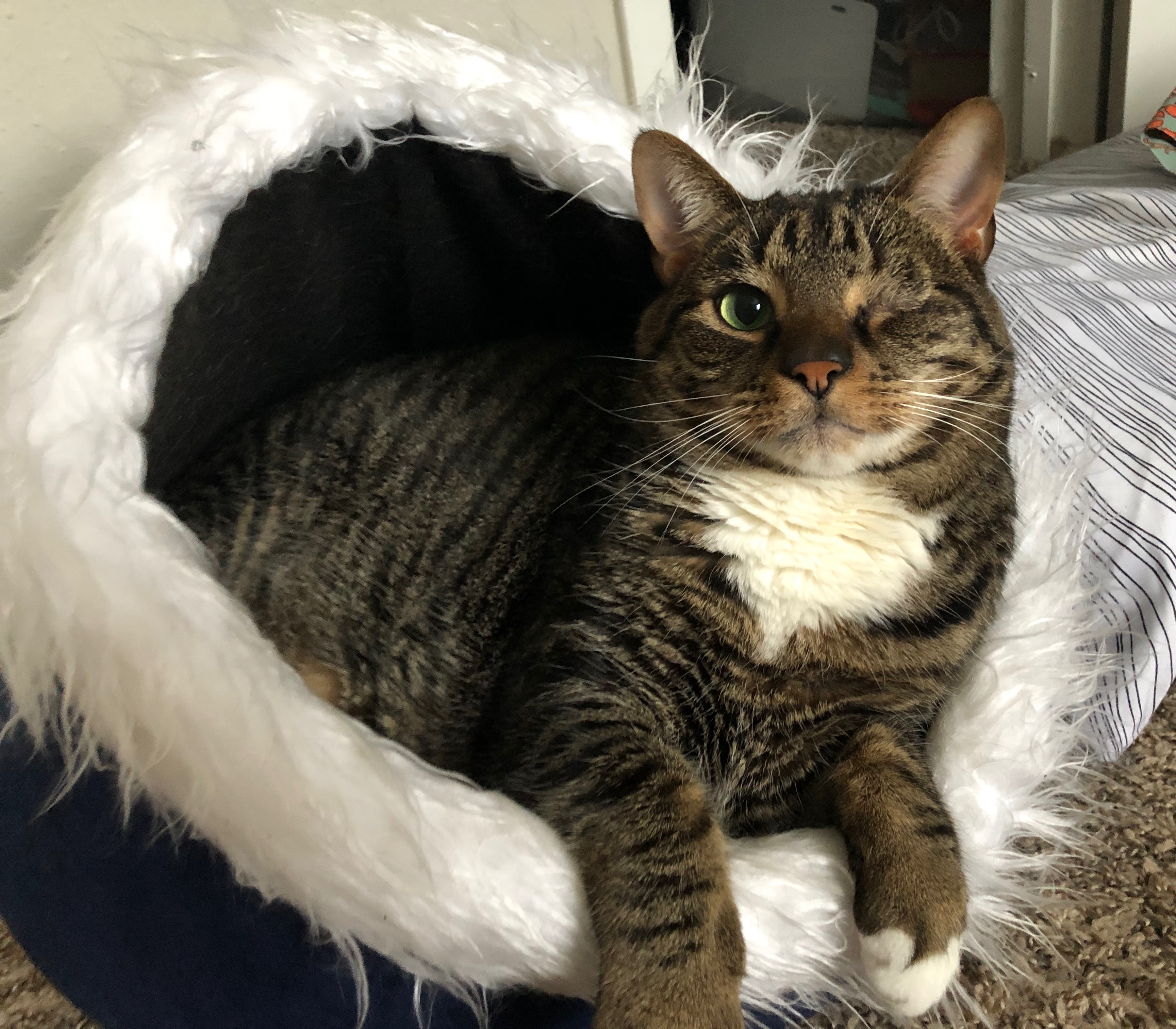It started when Amy Parker noticed her cat, Mongo, stumbling around the house. "Just every now and then he's looking like he had a couple too many," she says, mimicking a wobble.
The first couple of times, she mistook his crooked steps as a possible ear infection. Then one day he fell over.
"The vet referred me to a cardiologist, which I didn't even know that there were cardiologists for cats and dogs," says Parker.
That visit, which included bloodwork and X-rays, cost $600. And it was just the tip of the iceberg.
The cardiologist found that one of Mongo's heart valves was leaking, and he was subsequently diagnosed with cardiomyopathy, a heart muscle disease where the heart pumps in a way that makes it larger or thicker.
Mongo will have to ingest a beta blocker twice a day for the rest of his life.
The medication is covered by pet insurance. Everything, actually, was covered by Parker's pet insurance to some degree, including when Mongo was diagnosed with melanoma in his iris and had to get that eye removed a few months after getting diagnosed with his heart condition.
"If I hadn't had that insurance, I probably would have had to wait a little bit to get it removed, because I would have had to save up that extra money," she says.
Parker has Nationwide and pays $29 per month, per pet. She has an annual $250 deductible and after that the insurance pays 90% of costs. Parker opted for a plan that doesn't cover vaccines or yearly physicals, but she did the math and estimates she's paid $480 for Mongo's medical bills and prescriptions to date, including the $250 deductible. Adding in her monthly payments, her out-of-pocket sits at $840. Nationwide paid $1,175, she says.
One in three pets will need an emergency vet visit within a year, costing upwards of $800 to $1,500 per visit, according to CNBC. There are about 2.16 million pets insured in the U.S., according to the North American Pet Insurance Health Association. The average premium for accident and illness coverage for dogs is $566, or $47 per month, and the average premium for cats is $354, or $29.50 per month.
Pet insurance is becoming more popular. In 2019, the NAPIHA reported that the pet insurance sector reached $1.42 billion by the end of 2018. But Parker only had pet insurance because of Kitty.
In 2017, Parker went on vacation, and when she came back, Kitty wasn't eating. She took him to the vet and found he was in the early stages of renal failure.
"I ended up spending about $2,000 in a day and a half on emergency vet care," she says. "And since he was older, I couldn't insure him. He ended up passing on that summer, and the constant care was probably another couple hundred dollars just to keep him alive for those months."
Like with humans, insurance companies typically will not cover pre-existing conditions, routine care, elective procedures or liability coverage. And most rates are usually factored by breed, taking into account heredity diseases a specific animal may be prone to.
Parker has another cat, Biscuit, who she says thankfully hasn't needed to take advantage of the pet insurance. Still, she doesn't anticipate canceling it.
"I feel like my cats' insurance is better than mine," Parker says.


